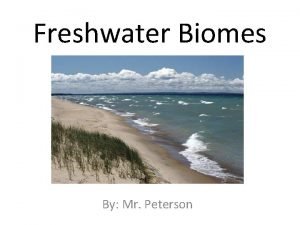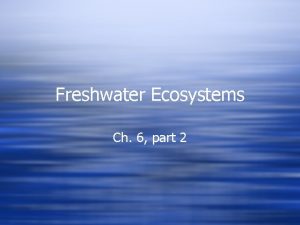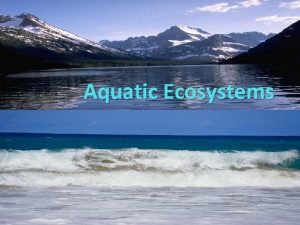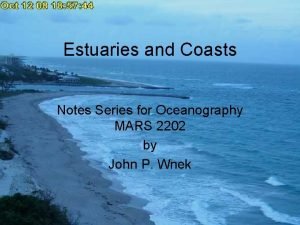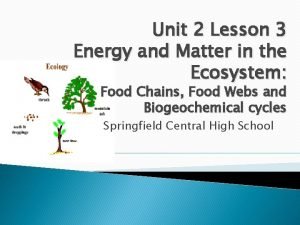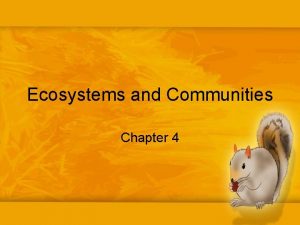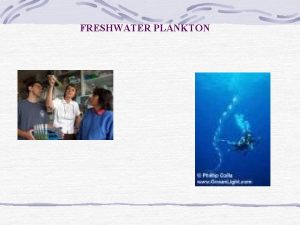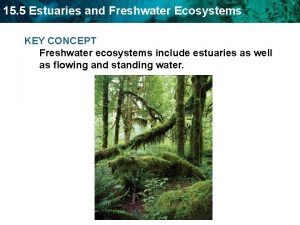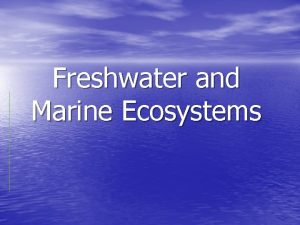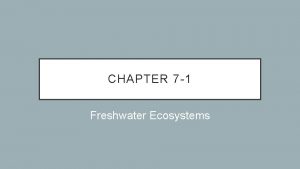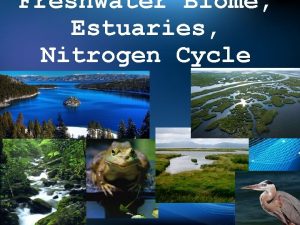15 5 Estuaries and Freshwater Ecosystems KEY CONCEPT








- Slides: 8

15. 5 Estuaries and Freshwater Ecosystems KEY CONCEPT Freshwater ecosystems include estuaries as well as flowing and standing water.

15. 5 Estuaries and Freshwater Ecosystems Estuaries are dynamic environments where rivers flow into the ocean. • An estuary is a partially enclosed body of water. – Large amounts of organic matter (river flow/tides) – mixture of fresh water with salt water (Brackish) – Chesapeake Bay, Florida Bay, Louisiana bayous – Includes salt marshes, mud flats, mangrove forests, tidal pools

15. 5 Estuaries and Freshwater Ecosystems • Estuaries are highly productive ecosystems. • 75% of commercial fishing – shrimp, scallops, clams, fish • Estuaries provide a protected refuge for many species. – bird migration – spawning grounds (Nursery of the sea) – Provide buffers for hurricanes (tidal surges) • Estuaries are primarily threatened by land development. 80%

15. 5 Estuaries and Freshwater Ecosystems Freshwater ecosystems include moving and standing water. • A watershed is a region of land that drains into a body of water.

15. 5 Estuaries and Freshwater Ecosystems • Wetlands are among the most productive ecosystems. Wetland – area of land that is saturated by ground or surface water for at least part of the year. Ex. Bogs, marsh, swamp – Filters and renews underground water supply – provide a home for many species – filter dirty water

15. 5 Estuaries and Freshwater Ecosystems • Some animals have adaptations suited to the freshwater they inhabit. • Factors that can fluctuate: water temperature, oxygen levels, p. H, water flow rate • Fast-moving waters: streamlined fish, sucker mouths

15. 5 Estuaries and Freshwater Ecosystems Ponds and lakes share common features. • Freshwater bodies are divided into three zones. – Littoral zone - high/low tide – Limnetic zone- (Pelagic) open water – Benthic zone- lake or pond bottom

15. 5 Estuaries and Freshwater Ecosystems • All lakes “turn over” periodically. – Turn over happens due to changes in density. 39 o F densest – In both autumn and spring, surface water flows downward and bottom water flows upward. – The upwelling brings up nutrients.
